Last year, Shimano took its 2×12 GRX mechanical and electrified it, and now it has finally reached the one-by makeover. It’s Shimano’s first wireless drop bar groupset. Thanks to the help of the recently launched Shimano mountain bike groupsets. But this is more than a “throw a mountain bike rear derailleur on the gravel group” kinda update. This update lets the GRX groups breathe, let their mullet down, and get loose on the trails.

If you’re looking for the nuts and bolts of the new Shimano GRX RX827 groupset, you can find them here, along with pricing information and weights. We’re here to discuss how the new GRX RX827 performs in the real world.

Shimano GRX RX827 – Wireless Freedom
I was fortunate to review the latest update to the GRX groupset, which transitioned the 2×12 mechanical to Di2 electronic. Since then, I’ve ridden that groupset on my bike, the one I take everywhere (even to the Sea Otter Classic), and I can firmly say I know the GRX group. One thing lacking from the 2×12 setup was a single-ring option, not only for the utility (you can hack one with some Wolf Tooth ring help) but also a proper one-by setup with a beefy rear derailleur. Now we have it, and it’s pretty awesome.
The crown jewel of the updated Shimano GRX is the RD-RX827 wireless rear derailleur. It supports Shimano’s clean, tough-as-nails MTB-derived cage (basically the XT design) with Shadow ES and Shimano’s impact-recovery system. This derailleur handles rock strikes like a champ, resetting when they occur, all without the rider knowing or entering a crash mode, unlike other drop bar versions.

With welded-in skid plates, a tougher alloy cage than the XTR, and oversized pulleys, the RX827 isn’t a lightweight luxury—it’s built to survive the gnarliest gravel. And thanks to the clutch-equipped derailleur, worries about chain drop are eliminated. Gone.
My First Questions
How about the battery? The battery is sealed up nicely from mud and muck. You have to remember that all this comes from the same technology as the XTR and XT groupsets, so Shimano did their homework on what could happen and how to combat it.
Does that beefed-up rear derailleur affect the shifting? No, not really. I will admit that it’s a slightly more chunky feeling than the GRX 2×12, but that’s also due to the cassette jumps. This groupset maxes out at a 10-51T (UCI – watch out) cassette and doesn’t require anything extra, like an aftermarket “Shimano UDH” or something that augments the frame. No cable, no fuss—click and go.
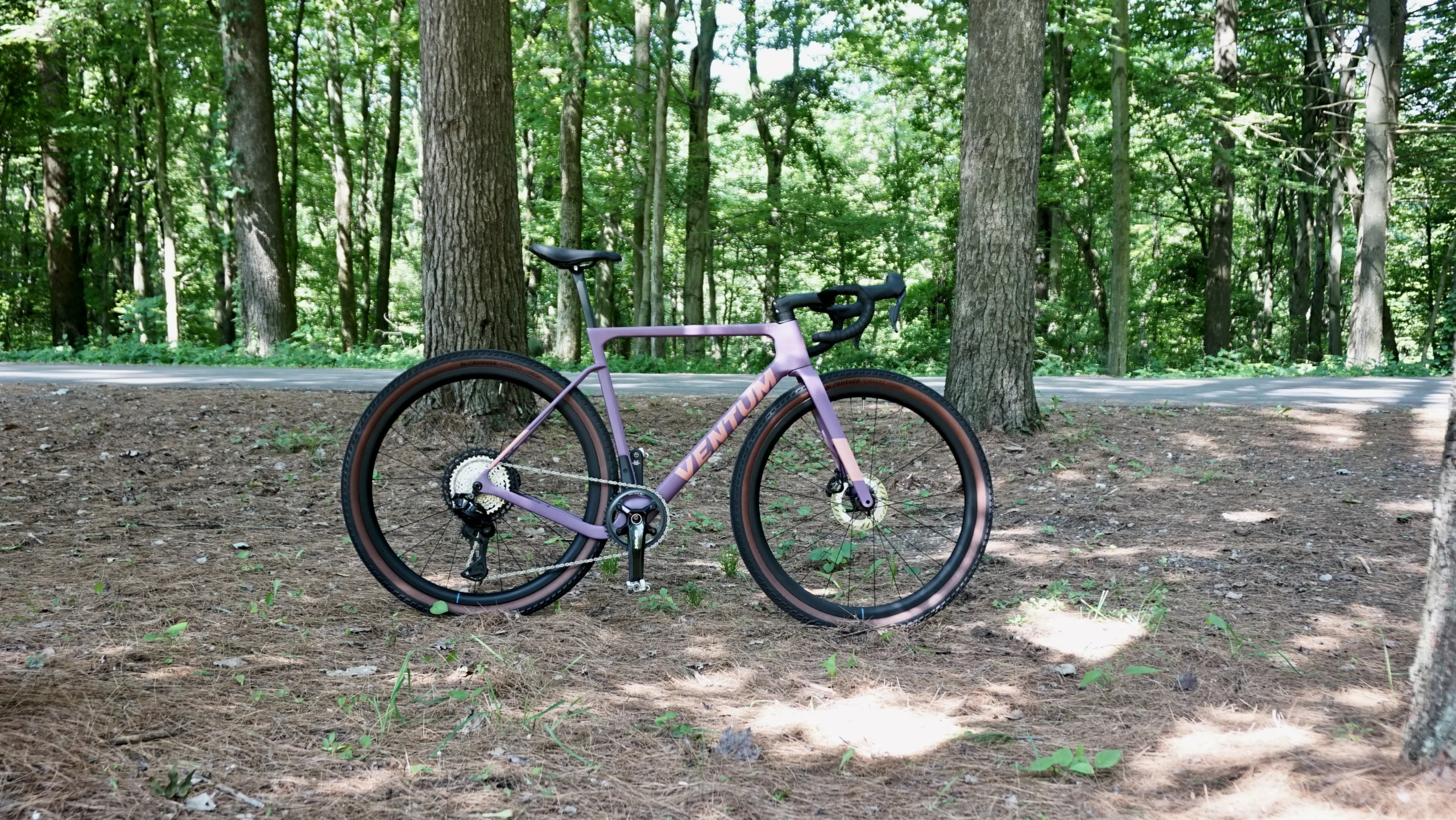
Ride Impressions – Shimano GRX RX827
When I started riding the RX827 GRX groupset, it didn’t feel like a new groupset. It’s the same shifters as my bike, and the braking is the same. But when you hit that shift button, lots of feelings happen. The shift sound is a slightly different sound than the one I’m used to hearing, and the shifting is a little more index feeling than the 2×12 version. And when you point your bike to the off-road and blazing gravel chunk – you’re gonna have a smile on your face and no dropped chains.

Comfy and Predictable
The cockpit of the Shimano GRX RX827 is identical to that of the previous model. Except they took something away. Shimano added a brake-only 1× Di2 lever (BL-RX825-L), streamlining the cockpit and reducing weight by a few grams. The hoods have the same anti-slip texture and lever shape, but do not have shifting buttons on the tops.
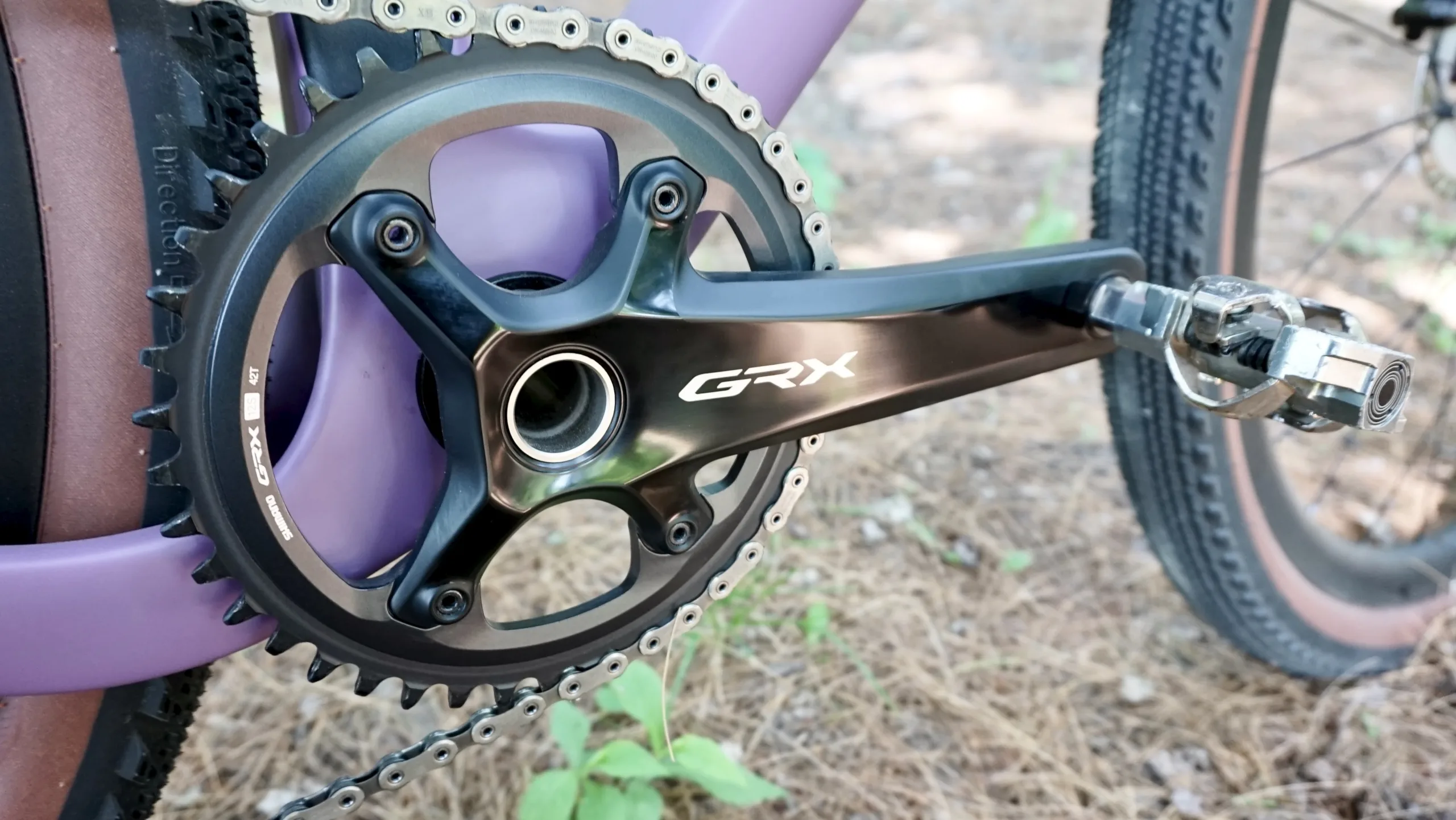
Crankset-wise, nothing is inspiring happening here. It’s the same as the mechanical 1×12 setup, and that’s cool. That groupset has very few issues and works like a charm; “If it ain’t broke, don’t fix it.” The single-ring options are 40T and 42T, with additional aftermarket options available from Wolftooth and others.
The only things that are new on the system are the rear derailleur (and battery), but it allows the GRX groupset to perform more efficiently than before, and for that, and that only, it’s a significant change.
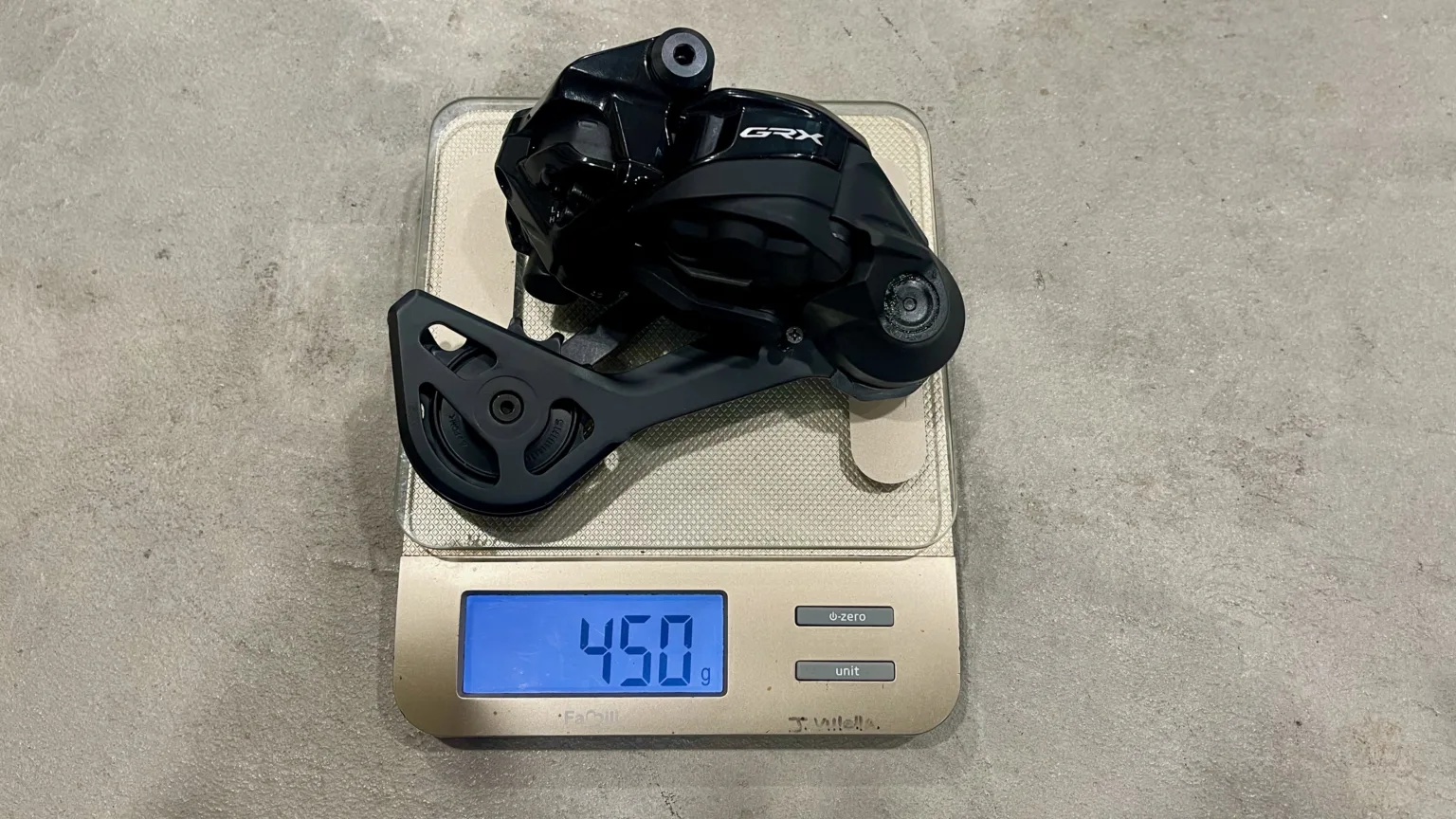
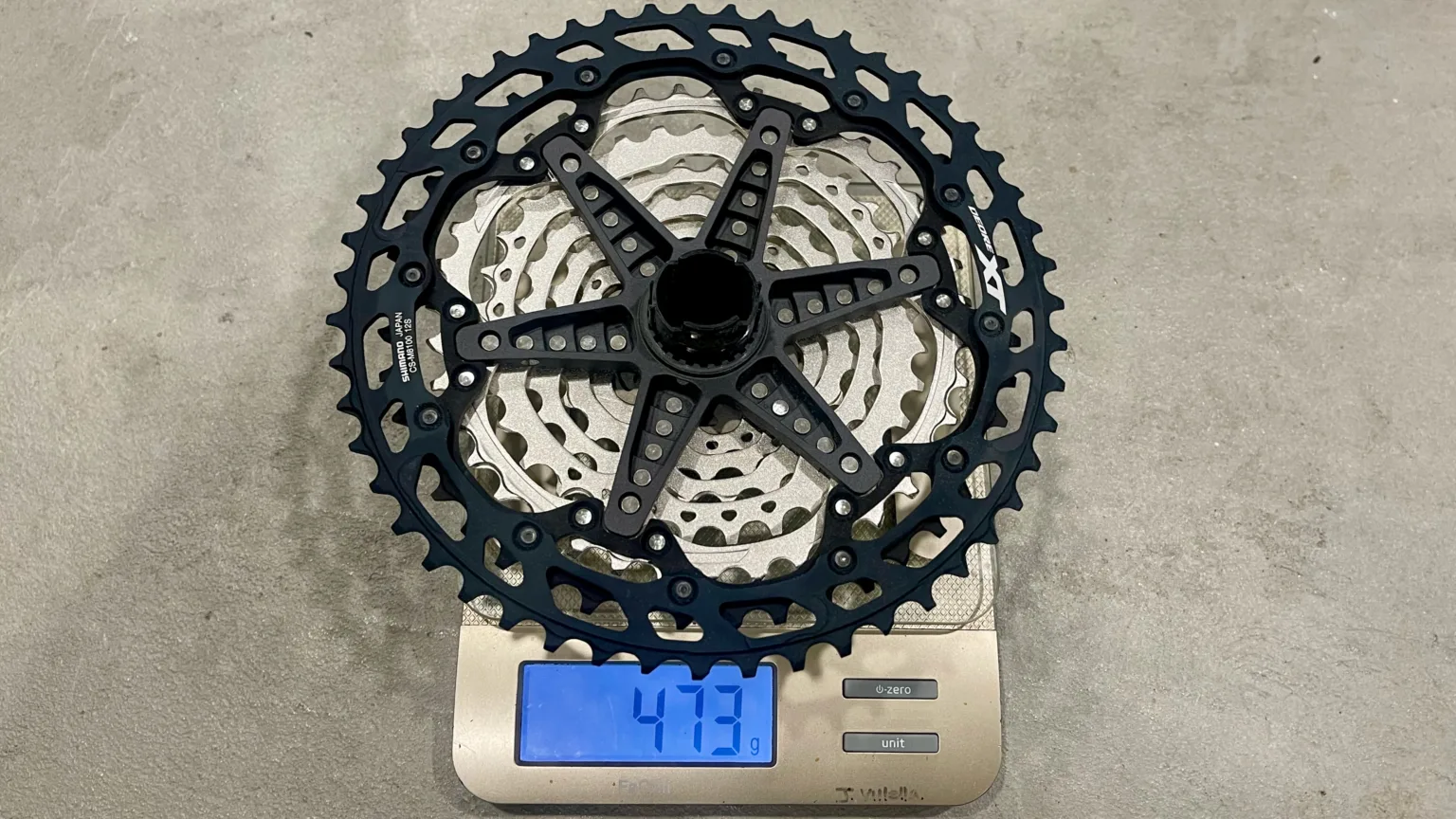
What About the Weights?
Here’s the weight breakdown of the new Shimano GRX Wireless. What it’s losing from the 2×12 setup is a ring (on the front), a front derailleur, and wires. However, it features a fairly robust rear derailleur and cassette. Here’s the breakdown:
| Component | GRX Di2 2×12 | GRX Di2 1×12 |
|---|---|---|
| ST-RX825 wireless shifters + brake levers | 440 g | 440 g |
| RD-RX825 rear derailleur | 310 g | 450 g |
| FD-RX825 front derailleur | 139 g | — |
| FC-RX820 crankset | 710 g (48/31T) | 660 g (40T) |
| Cassette | 381 g (11-34/36) | 474 g (10-51T) |
| BR-RX820 brakes (pair with hoses) | 335 g | 335 g |
| RT-CL800 / RT-MT900 rotors (pair with lockrings) | 216 g | 216 g |
| CN-M8100 chain (126 links + quick link) | 283 g | 283 g |
| BT-DN300 battery + EW-SD300 wires | 78 g | — |
| Total Weight | 2,892 g | 2,858 g |
Ride Impressions:
Have you ever changed one piece on a bike, and it gave it a whole new personality? That is what the Shimano GRX RD-RX827 did for the GRX groupset. Without sounding Crass (excellent band, by the way), it allows the GRX groupset to actually become a gravel groupset. Yes – the 2×12 version is a gravel groupset, but most riders are looking for that single front-ring option. Whether it be for simplicity, looks, gearing, etc. The riders want it, and the release of the GRX 2×12 felt like a band releasing a new album, but half of it was coming out later…

Now that we have the whole album and line, the GRX RX827 is the party/business casual side of the GRX family. If the 2×12 GRX line is for the more road-focused crowd, the one-by is for the off-road crowd.

The gearing jumps for the GRX 10-51T cassette are: 10, 12, 14, 16, 18, 21, 24, 28, 33, 39, 45, and 51T.
These are the exact jumps from the Shimano Deore XT cassette, something that mountain bikers would be accustomed to, not only in the change of RPMs but also in the intuition of what’s coming next. I felt the same while riding the trails; I knew the jump would be slightly more than what I’m used to on the road, but precisely what I’m used to on the mountain bike.
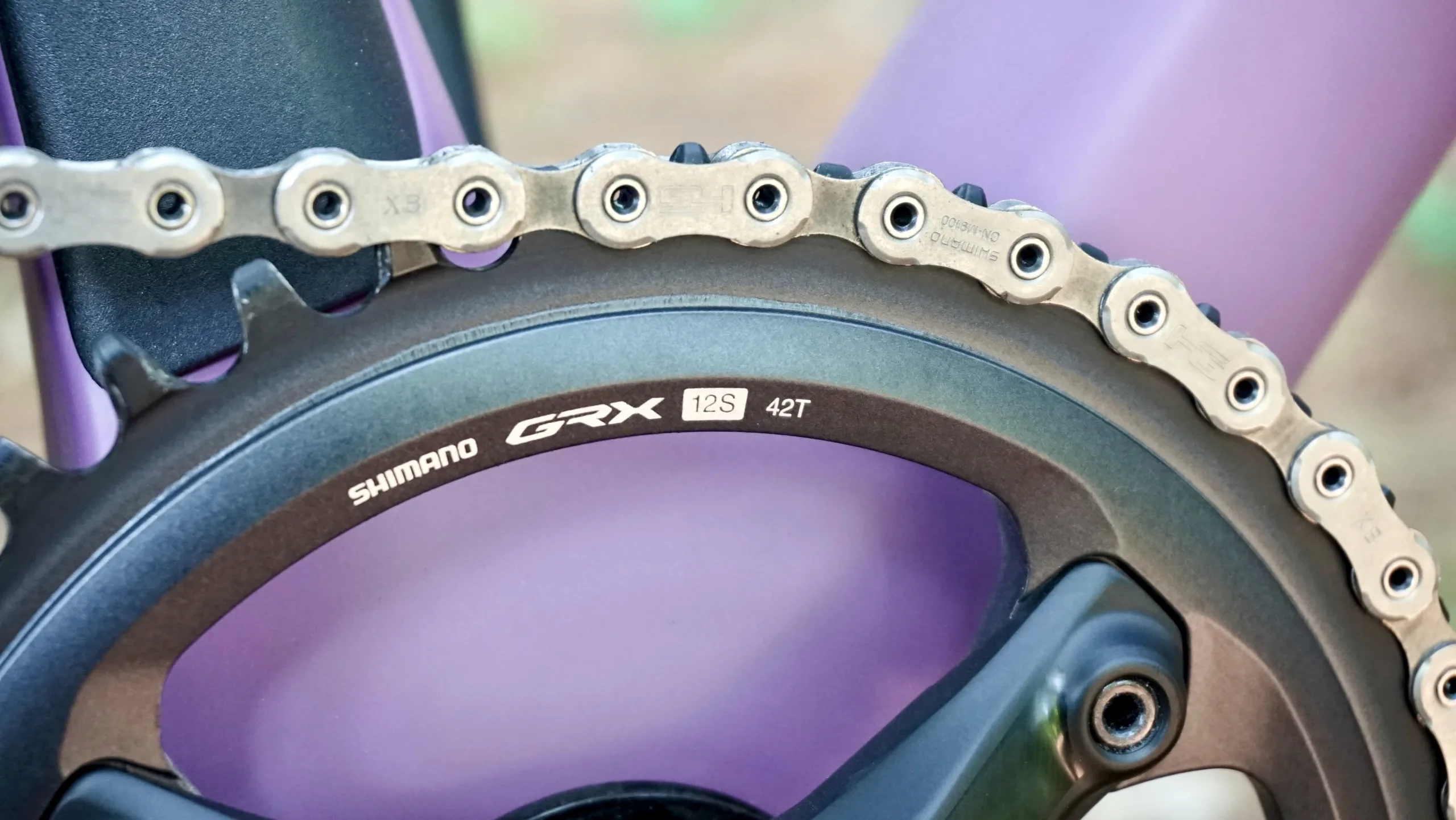
Feel Free To Send
One of the nicest parts of the Shimano RX827 is the chain retention on the new wireless rear derailleur. I’ve yet to ride the new Shimano wireless mountain bike groupset, so this experience was my first with the groupset. Let’s say I was happy with the results.
While descending or mashing through super chunky gravel, the rear end is quiet. I expected more chatter, but the retention is excellent. There is no switch to hit, no lever to throw, just a controlled chain with little to no “overtensioned chain” sensation. Unlike the SRAM XPLR counterpart of this groupset, the Shimano version doesn’t use a UDH, so the rear derailleur needs to have a sense about it to move and avoid.
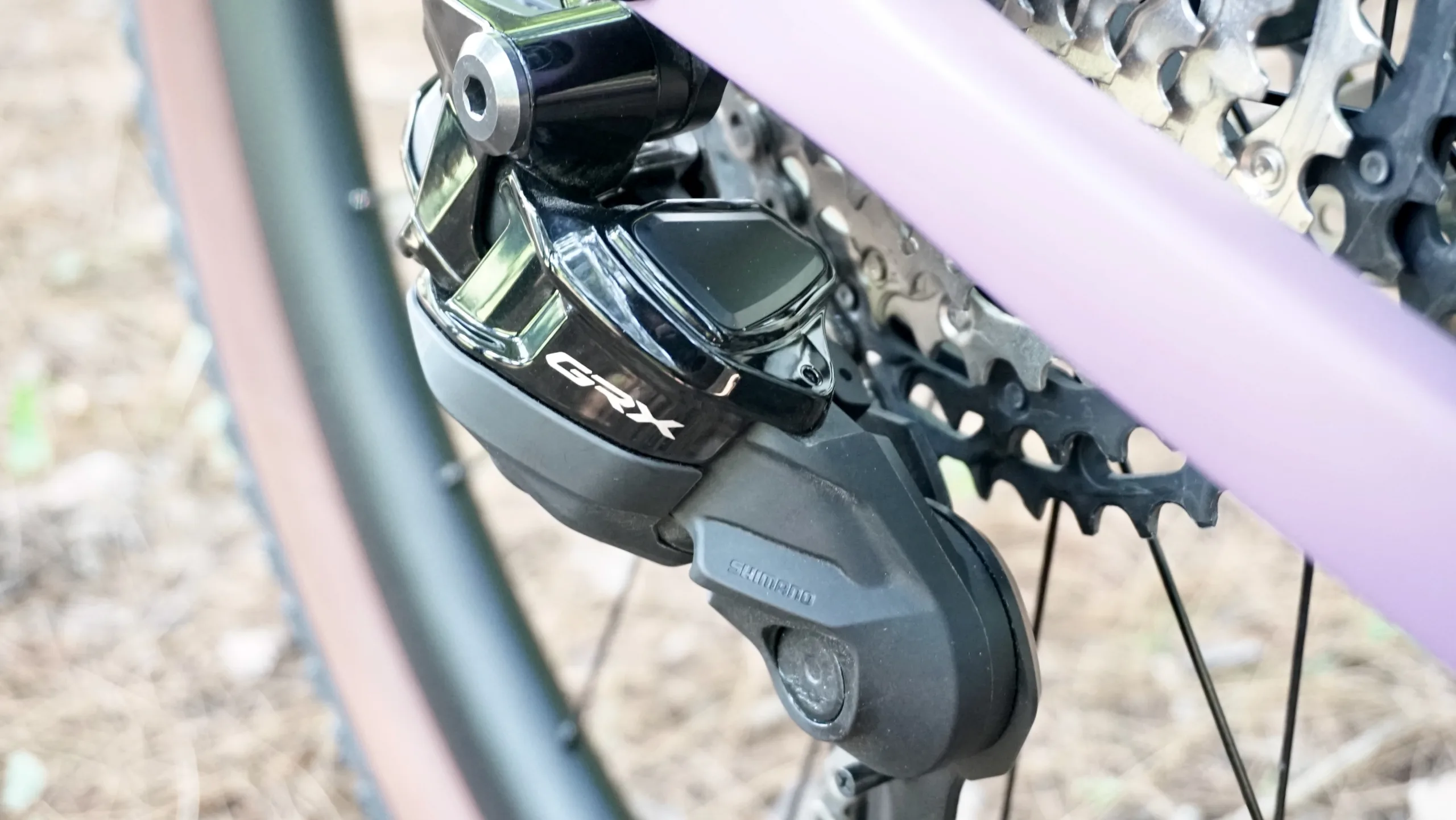
Shifting performance-wise, the system shifts boldly, precisely, and with a satisfying “thunk.” It’s the same fast response as the road shifting, though I thought I could feel a slight hesitation going from 45- 51T.
Older Frames Welcome
A nice bonus with the GRX wireless rear derailleur is that it doesn’t need a UDH to work with the frame. We’re not saying that the UDH is bad; we’re big fans. However, the new SRAM XPLR line, for example, requires the frame to have a UDH, which removes older frames from the upgrade conversation. The Shimano GRX wireless, though, will work and breathe some life into older gravel frames.
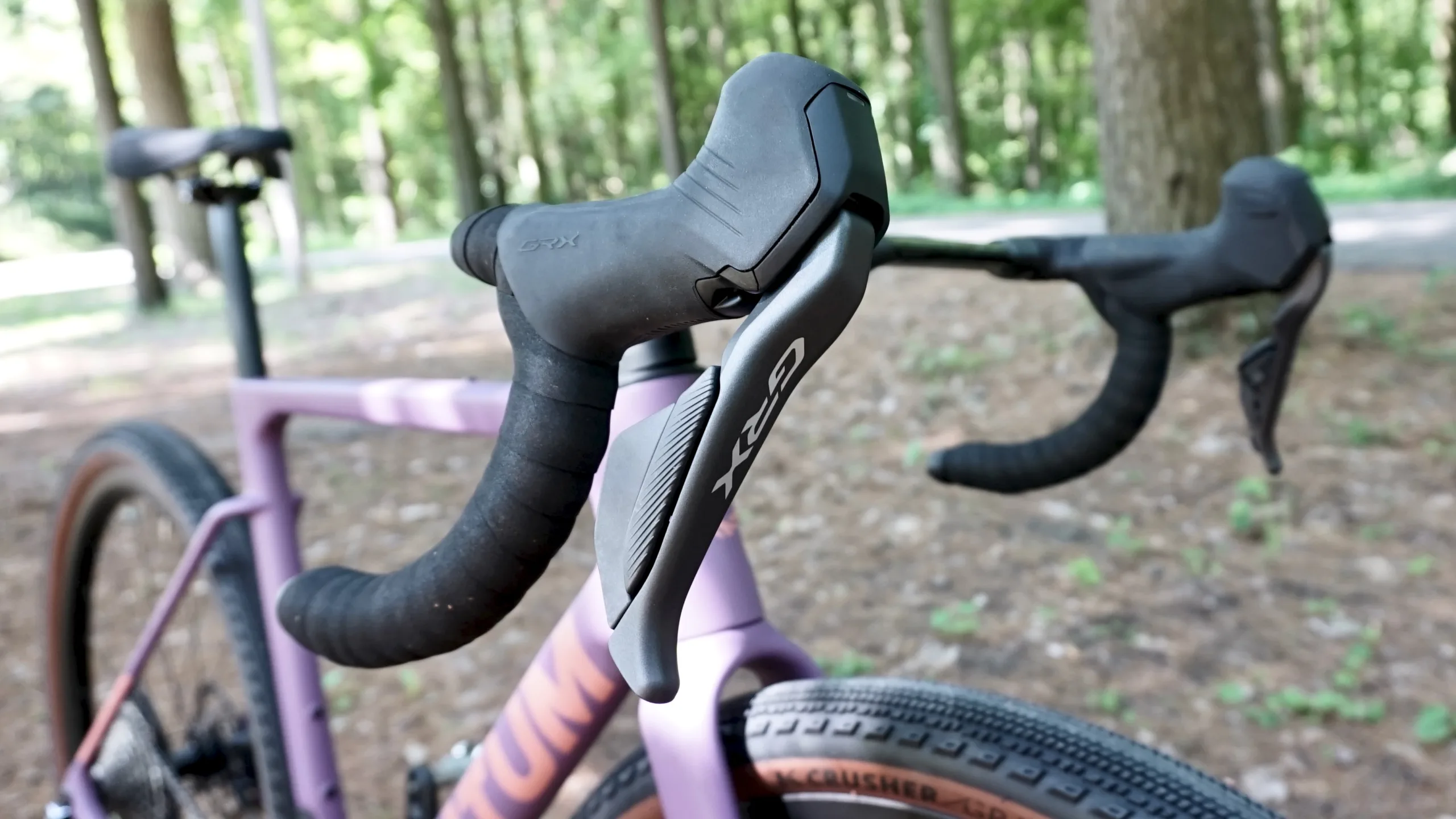
Final Impressions
This is the final puzzle piece that the successful GRX 2×12 launch needed. The performance (so far) is excellent and consistent. We plan on racing in some longer gravel races and adventures this season and look forward to pushing the GRX wireless through its paces, but we already know the outcome.
